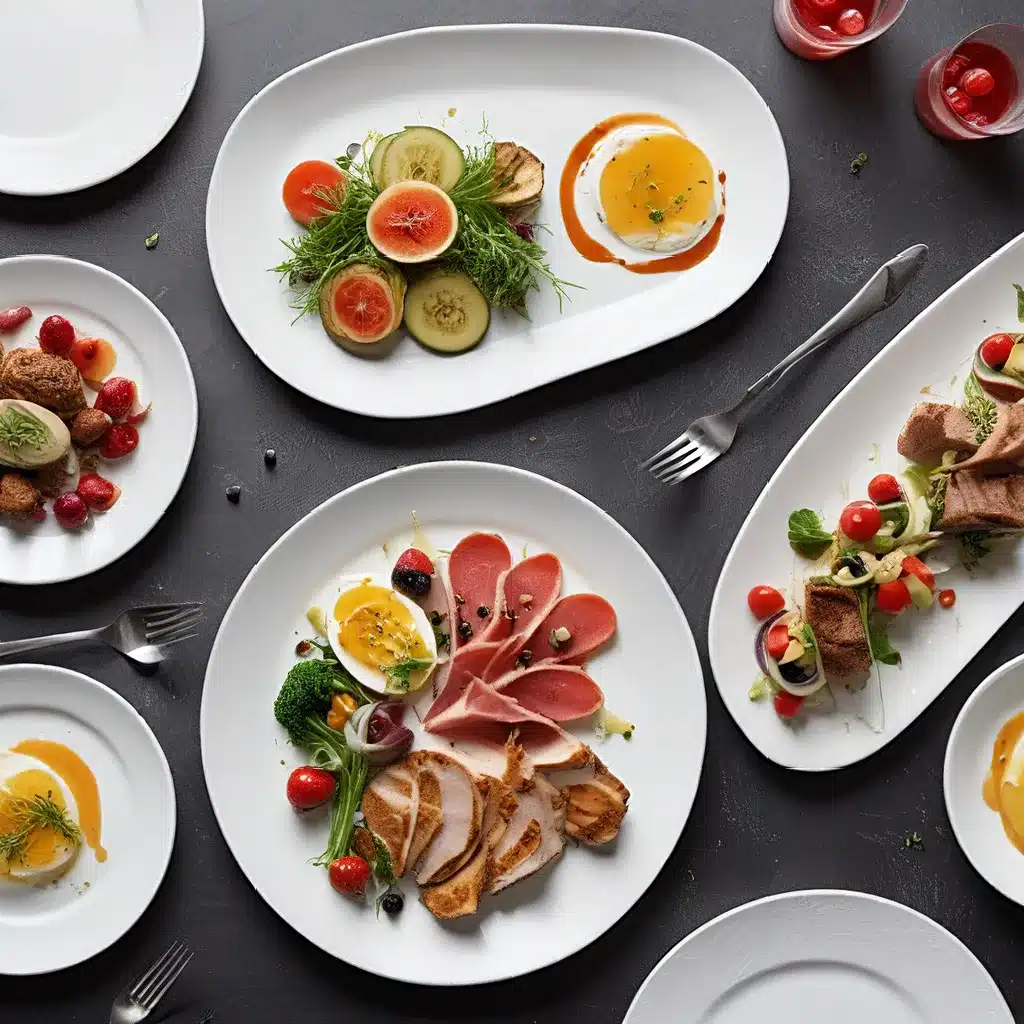
As a passionate home cook, I’ve always been fascinated by the art of plating. Sure, the taste of the food is paramount, but let’s be honest – we’re visual creatures, and the way a dish is presented can make all the difference in the dining experience. Whether you’re hosting an intimate dinner party or trying to up your Instagram game, mastering the art of plating can truly elevate your culinary creations.
The Importance of Preparation and Organization
Before we dive into the plating techniques, I can’t stress enough the importance of preparation and organization. Think about it – if you’re rushed and frazzled in the kitchen, how can you possibly be expected to plate your food with the care and precision it deserves? According to the experts at Knives Etcetera, it’s crucial to get your cooking process off to the right start. This means considering factors like the size and color of your plates, as well as whether they need to be heated or cooled to maintain the perfect temperature of the food.
And let’s not forget about cleanliness – those pesky watermarks and smudges can really ruin the aesthetic of an otherwise stunning dish. So take the time to ensure your plates are spotless before you start plating. Trust me, your guests will appreciate the attention to detail.
The Rule of Thirds and Layering
One of the most fundamental principles of plating is the rule of thirds. This concept, often observed in cooking shows, suggests that the “hero” of the dish – the main component – should be placed to the left or right of center, rather than directly in the middle. This leaves about a third of the plate free, creating a more visually appealing composition.
But the rule of thirds is just the beginning. As outlined in the video from the culinary experts, it’s also important to consider the height and contrast of your dish. Aim for up to three layers of food, each with its own unique texture and color to create a dynamic, eye-catching presentation.
And when it comes to the number of components on the plate, the experts suggest following the “odd numbers” rule. Placing 1, 3, 5, or 7 items of food on the plate is generally more pleasing to the eye than an even number. It’s a simple trick, but it can make a big difference in the overall aesthetics.
Sauces and Garnishes: The Finishing Touches
Now that you’ve nailed the placement and layering of your main components, it’s time to add the finishing touches. This is where sauces and garnishes come into play.
When it comes to sauces, the key is to be strategic and intentional. Rather than just dolloping it on, try using a spoon to create visually appealing dots, lines, smears, and arcs. These simple sauce techniques can instantly elevate the presentation of your dish.
And don’t underestimate the power of garnishes. While they may seem like an afterthought, the right garnish can add a final splash of color and even a subtle extra flavor. The experts suggest focusing on micro herbs and other delicate, visually striking elements that complement the dish without overshadowing it.
Putting It All Together: A Plating Masterclass
Now, let’s put all these principles into practice with a step-by-step plating masterclass. Imagine you’re serving a beautifully seared steak, accompanied by roasted vegetables and a creamy mashed potato. Here’s how you can plate it to impress your guests:
- Start by placing your steak (the hero of the dish) slightly off-center, following the rule of thirds.
- Arrange the roasted vegetables around the steak, creating a layered effect with varying heights and colors.
- Add the mashed potatoes as the base layer, using a piping bag or spoon to create an elegant, swirling pattern.
- Drizzle a sauce (such as a red wine reduction) in a series of arcs and dots around the plate, adding pops of color and flavor.
- Finish with a garnish – perhaps some fresh thyme or micro greens – to add the final touch of elegance.
The end result? A visually stunning, restaurant-worthy dish that’s sure to leave your guests in awe. And the best part? You can apply these principles to virtually any type of meal, from a simple weeknight dinner to an elaborate multi-course feast.
So, the next time you’re in the kitchen, don’t just focus on the flavors – take the time to elevate your presentation and impress your guests. After all, as the saying goes, “we eat with our eyes first.” With a little practice and attention to detail, you can transform your culinary creations into true works of art.
And remember, the team at Saint Marc is always here to help you discover new and innovative ways to take your plating game to the next level. Happy cooking!

